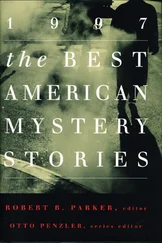See, training’s a hard row to hoe. It ain’t only the physical and mental parts for the fighter what’s hard, but it’s hard for the trainer, too. Fighters can drive you crazy, like maybe right in the middle of a fight they’re winning, when they forget everything what you taught them? And all of a sudden they can’t follow instructions from the corner? Pressure, pain, and being out of gas will make fighters go flat brain-dead on you. Your fighter’s maybe sweated off six or eight pounds in there, his body’s breaking down, and the jungle in him is yelling quick to get him some gone. Trainers come to know how that works, so you got to hang with your boy when he’s all alone out there in the canvas part of the world. He takes heart again, ‘cause he knows with you there he’s still got a fighting chance to go for the titties of the win. ‘Course, that means cutting grommets, Red Ryder.
Everyone working corners knows you’ll more’n likely lose more’n you’ll ever win, that boxing for most is refried beans and burnt tortillas. But winning is what makes your birdie chirp, so you got to always put in your mind that losing ain’t nothing but a hitch in the git-along.
Working with the big guys snarls your task. How do you tell a heavyweight full-up on his maleness to use his mind instead of his sixty-pound dick? How do you teach someone big as a garage that it ain’t the fighter with the biggest brawn what wins, but it’s the one what gets there first with deadly force? How do you make him see that hitting hard ain’t the problem, but that hitting right is? How do you get through to him that you don’t have to be mad at someone to knock him out, same as you don’t have to be in a frenzy to kill with a gun? Heavyweights got that upper-body strength what’s scary, it’s what they’d always use to win fights at school and such, so it’s their way to work from the waist up. That means they throw arm punches, but arm punches ain’t good enough. George Foreman does it, but he’s so strong, and don’t hardly miss, so he most times gets away with punching wrong. ‘Course he didn’t get away with it in Zaire with Mr. Ali.
So the big deal with heavies is getting them to work from the waist down as well as from the waist up. And they got to learn that the last thing that happens is when the punch lands. A thousand things got to happen before that can happen. Those things begin on the floor with balance. But how do you get across that he’s got to work hard, but not so hard that he harms himself? How do you do that in a way what don’t threaten what he already knows and has come to depend on? How do you do it so’s it don’t jar how he has come to see himself and his fighting style? And most of all, how do you do it so when the pressure’s on he don’t go back to his old ways?
After they win a few fights by early knockout, some heavies get to where they try to control workouts, will balk at new stuff what they’ll need as they step up in class. When they pick up a few purses and start driving that new car, lots get lazy and spend their time chasing poon, of which there is a large supply when there is evidence of a quantity of hundred-dollar bills. Some’s hop heads, but maybe they fool you and you don’t find that out till it’s too late. Now you got to squeeze as many paydays out of your doper that you can. Most times, you love your fighter like he’s kin, but with a goddamn doper you get to where you couldn’t give a bent nail.
Why shouldn’t I run things? the heavy’s eyes will glare. His nose is flared, his socks is soggy with sweat, his heart’s banging at his rib cage like it’s trying to bust out of jail. It’s ‘cause he don’t understand that he can’t be the horse and the jockey. How could anyone as big and handsome and powerful and smart as me be wrong about anything? he will press. Under his breath he’s saying, And who’s big enough to tell me I’m wrong?
When that happens, your boy’s attitude is moving him to the streets, and you may have to let him go.
* * *
Not many fight fans ever see the inside of fight gyms, so they get to wondering what’s the deal with these big dummies who get all sweaty and grunty and beat on each other. Well, sir, they ain’t big dummies when you think big money. Most big guys in team sports figure there’s more gain and less pain than in fights, even if they have to play a hundred fifty games a year or more, and even if they have to get those leg and back operations that go with them. Some starting-out heavies get to thinking they ought to get the same big payday as major-league pitchers from the day they walk into the gym. Some see themselves as first-round draft picks in the NBA before they ever been hit. What they got to learn is that you got to be a hungry fighter before you can become a championship fighter, a fighter who has learned and survived all the layers of work and hurt the fight game will put on you. Good heavyweights’re about as scarce as black cotton.
There’re less white heavies than black, and the whites can be even goofier than blacks about quick money. Some whites spout off that ‘cause they’re white, as in White Hope, that they should be getting easy fights up to and including the one for the title. If you’re that kind — and there’s black ones same as white — you learn right quick that he don’t have the tit or the brains to be a winner under them bright lights.
Though heavies may have the same look, they’re as different from each other as zebras when it comes to mental desire, chin, heart, and huevos — huevos is eggs, but in Messkin it means “balls.” Getting heavies into shape is another problem, keeping them in shape is a even bigger one, ‘cause they got these bottomless pits for stomachs. So you work to keep them in at least decent shape all the time — but not in punishing top shape, the kind that peaks just before a fight. Fighter’d go wild-pig crazy if he had to live at top shape longer than a few days, his nerves all crawly and hunger eating him alive. And then there’s that blood-clotting wait to the first bell. See, the job of molding flesh and bone into a fighting machine that meets danger instead of hightailing from it is as tricky as the needlework what goes into one of them black, lacy deals what Spanish ladies wear on their heads. Fighting’s easy, cowboy, it’s training what’s hard.
But once a trainer takes a heavy on, there’s all that thump. First of all, when the heavy moves, you got to move with him — up in the ring, on the hardwood, around the big bag. You’re there to guide him like a mama bear, and to stay on his ass so’s he don’t dog it. All fighters’ll dog it after they been in the game a while, but the heavies can be the worst. They got all that weight to transport, and being human, they’ll look for a place to hide. A good piece of change’ll usually goad them. But always there is more training than fighting, and the faith and the fever it takes to be a champ will drop below ninety-eight-point-six real quick unless your boy eats and sleeps fight. ‘Course, no fighter can do that one hundred percent. Besides, there’s the pussy factor. Which is part of where the punch mitts come in. They’ll make him sharp with his punches, but they’re also there to help tire him into submission come bedtime.
The big bag they can fake if you don’t stay on them, but a trainer with mitts, calling for combination after combination, see that’s for the fighter like he’s wearing a wire jock. But for the trainer, the mitts mean you’re catching punches thrown by a six-foot-five longhorn, and the punches carry force enough to drop a horse. And the trainer takes this punishment round after round, day after day, the thump pounding through him like batting practice and he’s the ball. I can’t much work the mitts like I once did, only when I’m working on moves, or getting ready for a set date. But even bantamweights can make your eyes pop.
Читать дальше
Конец ознакомительного отрывка
Купить книгу












